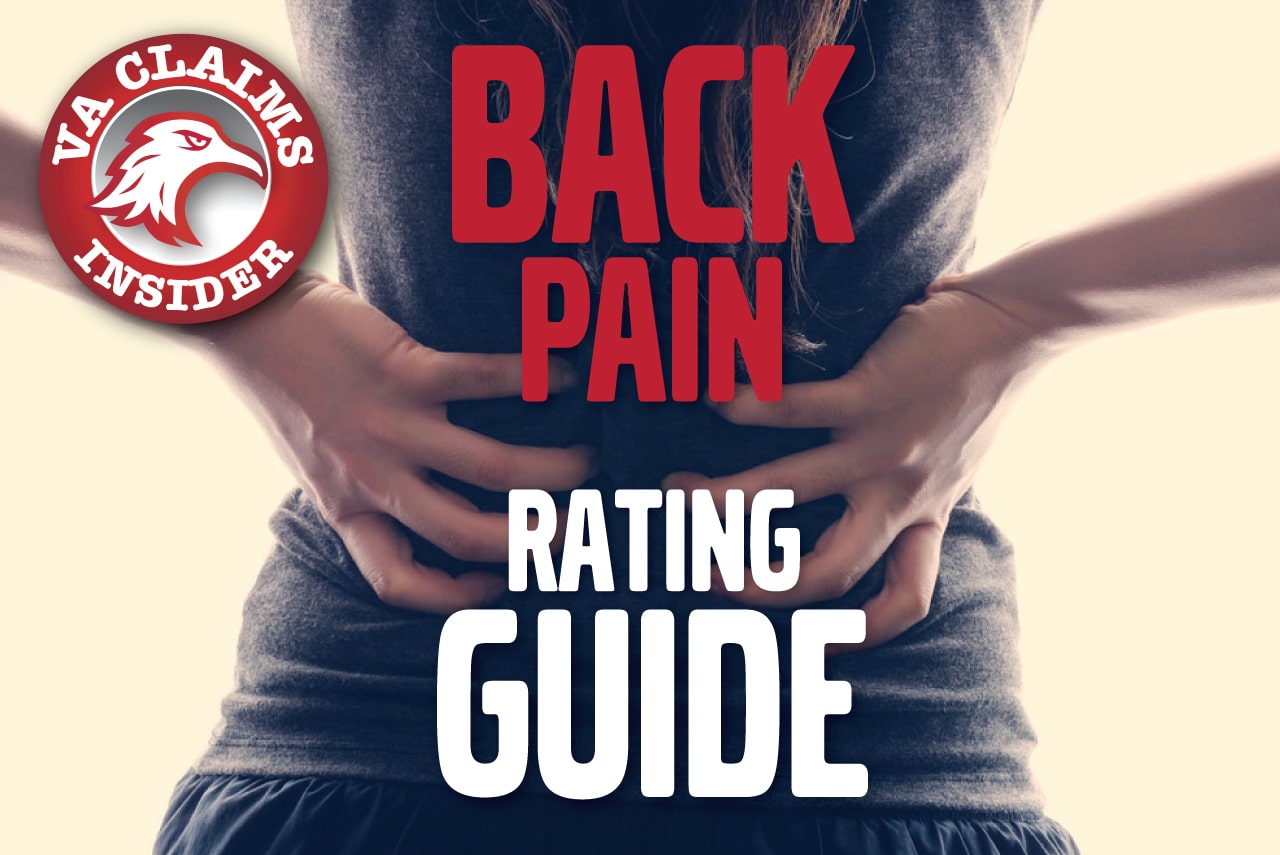

#Va rating for insomnia secondary to back pain trial#
A 2005 randomized controlled trial (RCT) found a moderate benefit of yoga for improving back-related function in civilian adults with cLBP. Yoga is increasingly common with more than 8 % of U.S. Although chronic pain in Veterans is a significant and growing problem, its impact on Veteran families has rarely been studied.

Partners of injured Veterans experience elevated distress levels along with the greater burden of caregiving for the Veteran, household, and children. Injured service members and their partners must adapt to the injury’s physical and emotional sequelae, including chronic pain, post-traumatic stress disorder (PTSD), and depression. Īccording to the Institute of Medicine, “Military family members are an important part of the readiness and well-being of the military force.” Several studies on the impact of chronic pain on family life in civilians have shown poorer couple agreement and lower marital satisfaction. Moreover, stigma and other barriers often prevent Veterans from seeking mental health care (e.g., cognitive therapy for PTSS), leading to additional barriers to back pain recovery. Low pain self-efficacy and maladaptive pain coping behaviors (e.g., catastrophizing, fear avoidance, and substance abuse ) compound back pain recovery. Among Veterans receiving care from VHA Polytrauma Network sites, 42 % had the triad of chronic pain, post-traumatic stress symptoms (PTSS), and persistent post-concussive symptoms (traumatic brain injury). Symptoms of post-traumatic stress, depression, and traumatic brain injury are highly prevalent in Veterans with cLBP. Psychological distress, back pain, and disability are strongly correlated. Among Veterans, back pain is a leading cause of disability. are estimated to be $100 billion or greater annually. The direct costs of chronic pain in the U.S. Among pain conditions, chronic low back pain (cLBP) is the most frequent and causes substantial suffering, decreased functional capacity, and lower quality of life. Overreliance on opioids is common and can lead to adverse effects ranging from sedation to dependence, addiction, and death due to overdose. Eighty percent of VHA visits include pain-related complaints. In a study of 91,000 Veterans receiving care from the Veterans Health Administration (VHA), 43 % reported having any pain, and 63 % of these reported moderate to severe pain. Musculoskeletal pain conditions are the most commonly diagnosed medical problems among the more than two million Veterans from Operations Enduring Freedom, Iraqi Freedom, and New Dawn (OEF/OIF/OND), far surpassing other medical and mental health disorders. This study will help determine if yoga can become an effective treatment for Veterans with chronic low back pain and psychological comorbidities.

We also assess cost-effectiveness from three perspectives: the Veteran, the Veterans Health Administration, and society using electronic medical records, self-reported cost data, and study records. Qualitative interviews with Veterans in the yoga group and their partners explore the impact of chronic low back pain and yoga on family relationships. In the subsequent 12-week follow-up period, yoga participants are encouraged to continue home yoga practice and education participants continue following recommendations from the book. Primary outcome measures are change at 12 weeks in low back pain intensity measured by the Defense and Veterans Pain Rating Scale (0–10) and back-related function using the 23-point Roland Morris Disability Questionnaire. The 24-week study has an initial 12-week intervention period, where participants are randomized equally into (1) a standardized weekly group yoga class with home practice or (2) education delivered with a self-care book. Participants are Veterans ≥18 years old with low back pain present on at least half the days in the past six months and a self-reported average pain intensity in the previous week of ≥4 on a 0–10 scale. This study is a parallel randomized controlled trial comparing yoga to education for 120 Veterans with chronic low back pain.

However, it is unknown if results from previously published trials generalize to military populations. Yoga for low back pain has been demonstrated to be effective for civilians in randomized controlled trials. Symptoms of post-traumatic stress, depression, and mild traumatic brain injury are highly prevalent in Veterans with back pain. Chronic low back pain is the most frequent pain condition in Veterans and causes substantial suffering, decreased functional capacity, and lower quality of life.


 0 kommentar(er)
0 kommentar(er)
